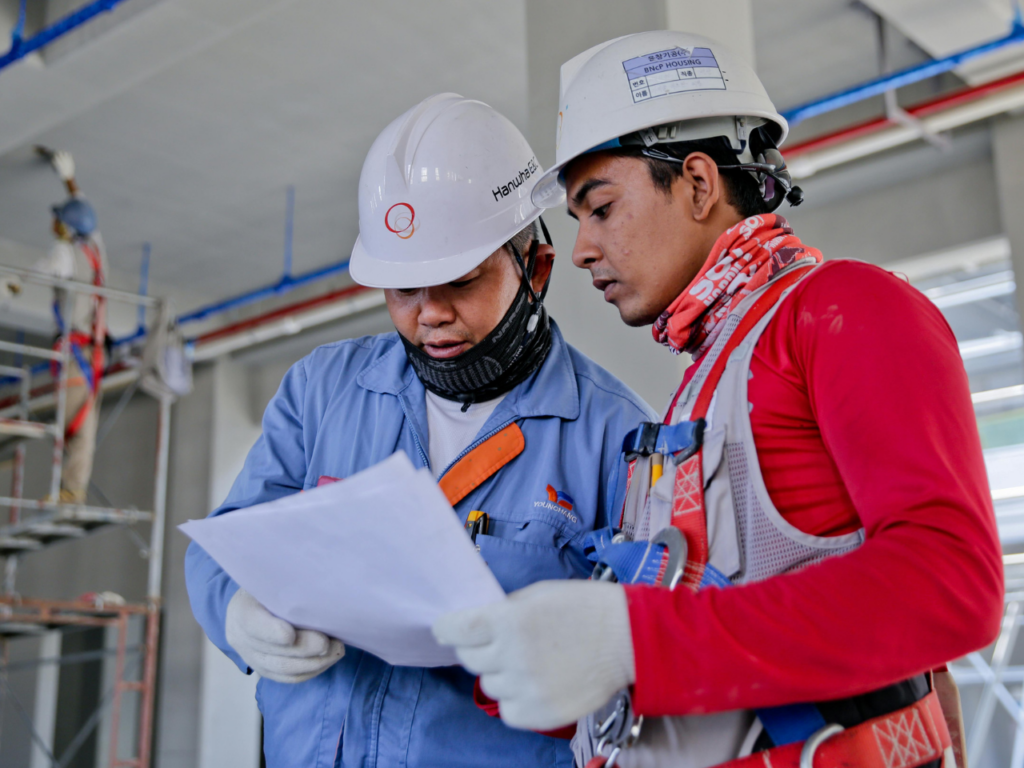The waste sector is vital to South Africa’s economy and environment but faces growth challenges due to skills shortages. To address this, the Department of Science, Technology, and Innovation (DSTI) launched the Waste Research, Development and Innovation (RDI) Roadmap to boost student graduation and develop essential skills.
The Waste RDI Roadmap is aimed at supporting the transformation of the waste sector through the generation of scientific evidence. The CSIR was tasked with implementing the roadmap on behalf of the government.

Prof Linda Godfrey, a principal researcher at the CSIR’s integrated waste management division.
- Human capital development (HCD)
- Research and Development (R&D)
- Innovation in the sector.
The HCD programme
 The HCD component of the Roadmap seeks to build a skilled workforce in both the public and private sectors, driving the transformation of South Africa’s waste industry.
The programme was funded by the DSTI and housed within the CSIR; and aimed to strengthen sector capability through the investment in post-graduate students.
This was achieved by means of the:
The HCD component of the Roadmap seeks to build a skilled workforce in both the public and private sectors, driving the transformation of South Africa’s waste industry.
The programme was funded by the DSTI and housed within the CSIR; and aimed to strengthen sector capability through the investment in post-graduate students.
This was achieved by means of the:
- Development of two new postgraduate degrees that offer specialised study in solid waste management
- Direct scholarships for post-graduate students
- Partial or full funding for post-graduate students supported under Waste RDI Roadmap grant projects
- Funding under the two Waste Roadmap SARChI Chairs, and lastly
- Internship placements managed by the HSRC.
Prof Godfrey says, “We had clear goals for the programme, so it was crucial to assess its impact afterward. We evaluated our success, identified what worked, and noted areas for improvement as we integrated these insights into the new Circular Economy Science Technology and Innovation (STI) Strategy.”
The HSRC’s track and trace study

Investing in skills within the waste sector is investing in the future of South Africa.
- Gather data about the effectiveness and impacts of the programme
- Provide information about the activities, outcomes, and employment of beneficiaries
- Determine the nature of employment of beneficiaries
- Determine the extent to which beneficiaries were retained in the Waste Sector
- Pilot a survey of the beneficiaries’ employers’ perceptions of the value of the programme
- Generate evidence of key achievements and challenges regarding programme delivery mechanisms and how these can be improved for sustainability in the future.
- 49% came from households earning more than R20 500 per month with a further
- 11% from household earning between R10 500 and R20 000 a month
- 4% in a household earning between R7500 and R9500 a month
- 4% in a household earning between R3000 and R6500 a month
- 3% of the respondents came from households earning less than R1000 per month
- 28% did not respond to this question, refused to answer, or were unsure about their response.
Destinations

While many graduates of the HCD programme stay within cities like Johannesburg, many live away from city centres spreading their new knowledge to areas that need it most
Benefits and barriers

Nurturing innovation in the waste sector by drawing new minds to the industry will produce innovation and help move towards South Africa’s circular economy plans
“Part of the reason for the study is to see how the waste sector received the graduates, and what we need to consider going forward if we are to add meaningful skills to the sector,” says Prof Godfrey. The track-and-trace study allows for a balanced look into the programme, and the benefits that it had.Overwhelmingly 93% of respondents reported that they would recommend the programme to others, noting that the programme had benefits outside of the financial aspects, including advanced mentoring and networking opportunities. More than two-thirds of the beneficiaries said that the programme had helped them find employment, with one graduate stating that they were hired off the strength of the programme alone. Dr Mncwango noted that “Employer recognition was a major factor that we considered within the study, as employment is the ultimate goal of the programme.” The study surveyed employers who hired graduates from the programme, and the following stood out:
- Waste sector employers all reported concerns about insufficient labour supply in the sector.
- Several employers said they had not heard of the programme until they hired a graduate.
- Waste sector employers feel that there is significant skill migration in the sector.
- Public entities say that their needs are socially mandated but cannot compete with the private sector in terms of salary, resulting in skills loss for key waste sector projects within the municipal sector.
- Most employers report a need for specific courses that tackle specialised e-waste management activities rather than broad training.
- Employers’ perception was that the waste sector is a neglected sector in terms of funding and training.
Motala says, “Getting info from the employers is just as valuable as getting data from the graduates. From what we gathered there is a clear need for this programme, but we found issues in terms of public versus private sector experiences of the programme including levels of general awareness.”The employers all reported positive experiences with the graduates, noting proficiency, commitment, and reliability among the graduates. Some employers reported that the programme helped them locate specifically skilled graduates, while others reported graduates helped them pass their audits. The study also helped identify systemic barriers, Prof Godfrey explains, “The waste sector, like any other, comes with its own problems. What the study can do is identify these problems and help us move forward with more context and better plans to help overcome these barriers.” Women have a longer time finding employment in the waste sector, municipalities specifically only employed male graduates. Dr Mncwango says, “This reflects the broader gender inequality in South Africa, which necessitates targeted interventions.” “The waste sector has traditionally been a very male-dominated sector,” adds Godfrey, “but we are seeing this change as more women resonate with the green and circular economy opportunities that the sector can provide.” Other notable barriers include:
- Gatekeeping in the waste sector: Many graduates report that the waste sector relies on relationships rather than straight qualifications.
- Lack of or poor-quality mentorship: While the programme promoted mentorship, some graduates noted that the mentors were not obligated to share their expertise, and it was treated as a formality.
- Limited practical experience provided by employers: Employers expect practical skills on top of higher-level qualifications, which some graduates felt were unrealistic.
- Limited knowledge about employers in the waste sector: Some graduates felt that their knowledge of potential employers was limited outside of municipal or research roles.
- Financial constraints by employers: Employers, especially in the public sector, did not provide adequate salary versus qualification and skill expectations.
- Personal challenges leading to withdrawal from the programme: 7 students withdrew from the programme citing difficulties with their supervisor, lack of support, and personal challenges.
Results

Employers of the HCD graduates were happy with the HCD graduates, suggesting that the CSIR do more to promote their human capital interests.







